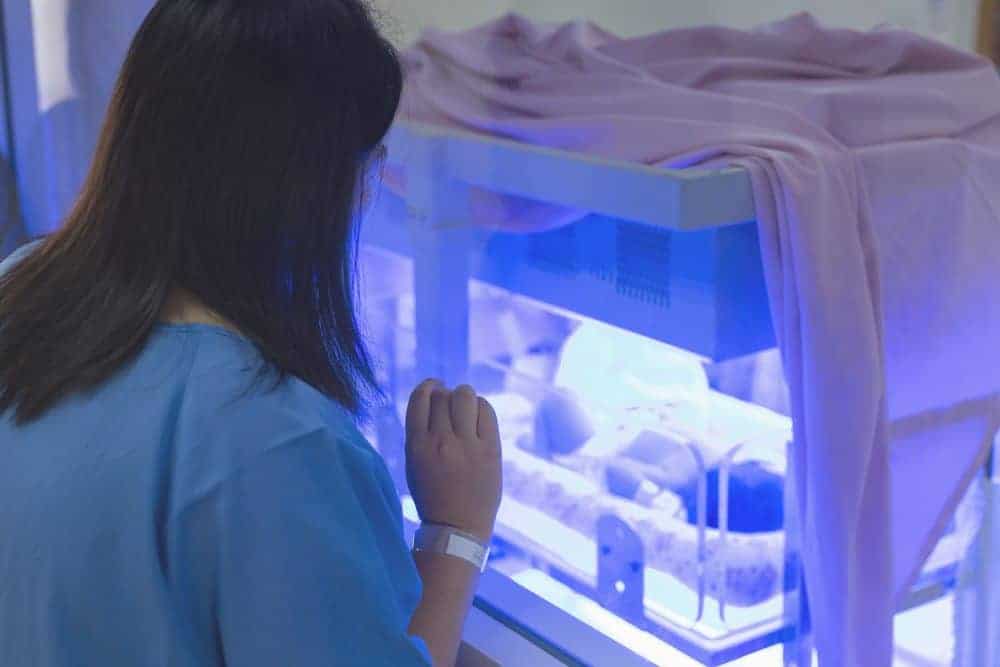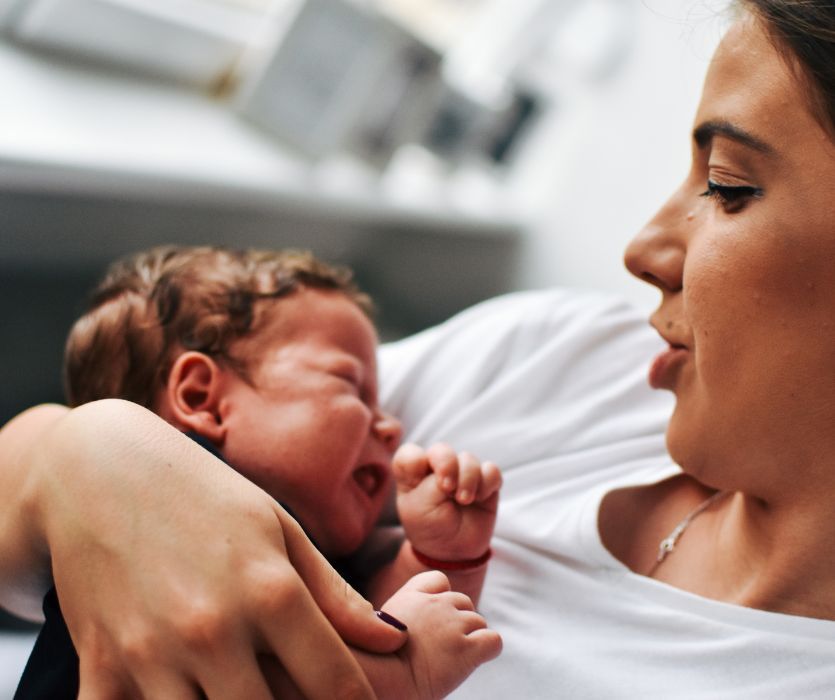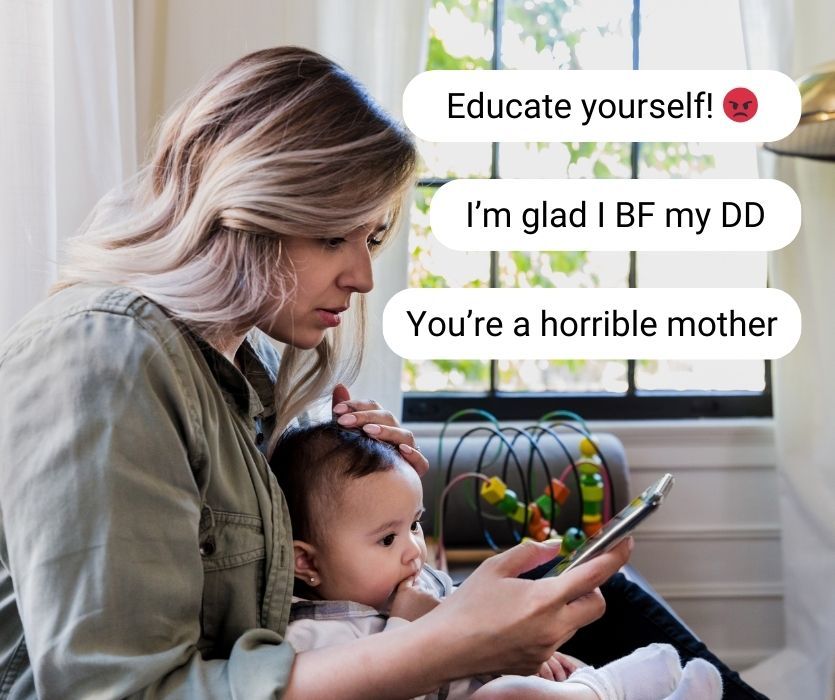Being a first time mother, I wanted to plan out everything and research anything unknown that I could. But having an unexpected delivery at 32 weeks sent everything I’d read out the window.
Now that I am on the other side on this and my baby is a toddler, I felt drawn to share the bit of info that I have learned and experienced.
What to Expect in the NICU:
1.
That beautiful period after the birth where you hold your baby in your chest… may not happen. The baby may need medical attention or you may be tied to a Magnesium Sulfate IV. Preeclampsia mommas get Magnesium Sulfate after delivery which delays visiting your baby for 24 hours.
2.
NICU staff may let you FaceTime so your partner can keep you involved in those first moments of seeing the baby in the NICU while you are recovering in your room.
3.
NICUs are crowded. There could be 15 babies per room and there may be multiple rooms of 3 or more. Curtains are pulled around each bed for privacy and breastfeeding. Once you get situated, you may request to be moved to the next available corner spot for more privacy and space.
4.
Preemies may appear reddish and wrinkly. Those few weeks or months they missed in the womb was all about the baby getting fat. This fat coat makes the skin stretch and provides a barrier between the skin and blood vessels which adds to a more natural color.
5.
Most likely the baby will be sunbathing under a blue lamp with some preemie goggles until their Bilirubin levels are better.
6.
The incubator is in place to facilitate that blue light and to provide added warmth since your baby doesn’t have their fatty coat on.
7.
There will be tags and tubes everywhere. This varies depending on your baby’s condition. But the basics are: one ankle with a security band that would go off if the baby leaves the maturity floor (aka. Baby LoJack). Another ankle band that has your name and ID number which matches your wrist’s band that you keep on until the baby comes home. One foot will have a taped sensor. Two sticker sensors on the chest. A nose tube taped to the cheek which feeds your baby until they can bottle feed. And lastly, a breathing tube over the nose which may just be there to keep positive air flow for the lungs to fully move up and down like they should. All sounds and looks overwhelming at first but you’ll get familiar with what they all do.
8.
Open cribs are for babies that can keep their temperature stable and does not need as much support. However, they will have the tags and sensor stickers like all the incubator babies.
9.
You will not need to bring baby clothes. The hospital supplies shirts and sleep sacks. If you can’t resist, you can bring in your own. Just write your info on the tag and leave a baggie for the nurse to collect the dirty clothes in your bedside station.
10.
Preemie skin is super sensitive. It may be best not to rub the skin so ask your nurse first. Just take your hand and cap their head and bottom at the same time to give that little secure hug. It’s an amazing trick to settle the baby when they start to cry.
11.
An occupational therapist will come by to help the babies get on the bottle or latch for breastfeeding. Preemies have a little hurdle on the suck-swallow-breathe process but they’ll get it. Preemies also feed differently than newborns so sit in on all the visits if you can. For bottle feeding, you hold them like a football, away from your body to keep them awake (your body heat tends to make them sleepy), and at a slight angle so the milk hits their inside cheek before sliding down the throat, and most importantly, a 15-30 min upright hold to prevent spit-ups. It’s all business because after 8 consecutive bottles, the feeding tube in the nose may come out as a small checkmark milestone to the going home process. Learn how to use that bulb incase reflux happens. It’s very common because the little flap in the esophagus is still developing and it remains a little open like a door to let food down and also back up again. It all gets better when the baby starts to sit up and roll over.
12.
Baby can come home once all the boxes are ticked on this checklist… reaches 4 lbs, maintains body temperature, no nose tubes and can feed exclusively from the bottle or breast, passes a 7-day ALTE test which includes the car seat test. For the car seat test, you will need to bring in your seat rated for 4lbs and the baby will need to sit in for the timeframe that takes for you to travel from that hospital to home without an ALTE. Chicco KeyFit 30 is what I used and works great. The hospital may offer a low cost car seat you can purchase too.
13.
Moving your baby around for simple tasks like diaper changes can be intimidating with all the tubes and sensors. Speak up and any nurse will be more than happy to help even if they are not assigned to your baby. However, keep in mind the nurses will give you your personal space and time with your baby when you are at the bedside so it is up to you to speak up for that assistance.
14.
Do not touch a sleeping baby a nurse once told me. I was offended at first because I just drove 2 hours to see my baby only to have someone say stay away. But I learned this is golden advice for a preemie, a newborn, an infant, or a toddler.
15.
Ask for the feeding schedule and let your baby’s assigned nurse know ahead of time if you would like to do the feed or kangaroo. They may have 2 or 3 babies they tend to and they will plan their feeding cycle to when you can get in. An example schedule is 2,5,8,11 am and 2,5,8,11 pm. The routine starts with taking the baby’s temperature under the arm (never in the ear), diaper change, and then feed and hold for 15-30 mins. Important to change the baby before feeding as they get stinking upset about the experience and the feeding puts them right out and always hold the baby upright for at least 15 minutes even if the baby is asleep.
16.
You will get a visitor list where you can write down who can see your baby. There is about a 2 visitor limit that can go in at one time and there may be restrictions on children since they are most likely carriers of something that could make your baby sick. The NICU is not a social zone so there is usually just a few very close family or friends that come.
17.
When you are discharged, take all the keepsakes in you bedside station like the birth cap, a preemie diaper, pacifiers, blanket, first bottle, and tags and sensors. All the supplies they used at your station will not move to another station. When a pacifier becomes dirty, they will throw it away and get another one. You’ll be grateful to have those pacifiers when the baby comes home. Also, bulk up on however many preemie diaper bags and formula they will let you take home. Preemie diapers are hard to come by so get them anywhere you can and in bulk as a preemie will go through about 8 diapers a day.
18.
Breastfeeding or formula? Your milk may not come for several weeks after birth. Donor breast milk may be available so think about your position on that. Pumping and supplying the breast milk might be difficult with how you travel from home to the NICU. Your blood pressure may be too high to produce breast milk or you may be recovering from surgery so give yourself a break and do what’s best for you.
Did you have a stay in the NICU? Are there any other tips you would add?




Leave a Comment